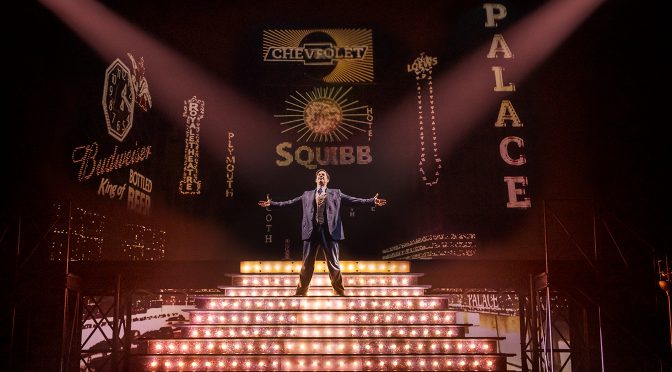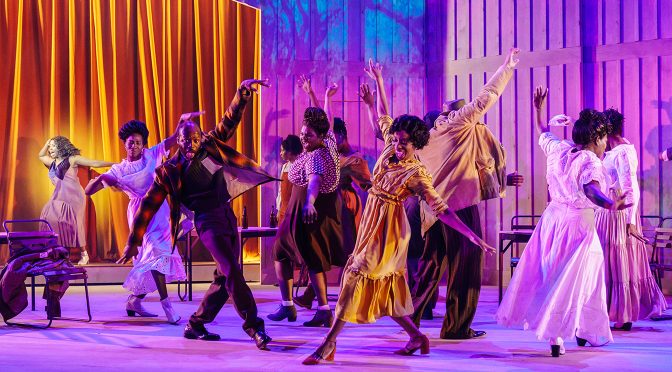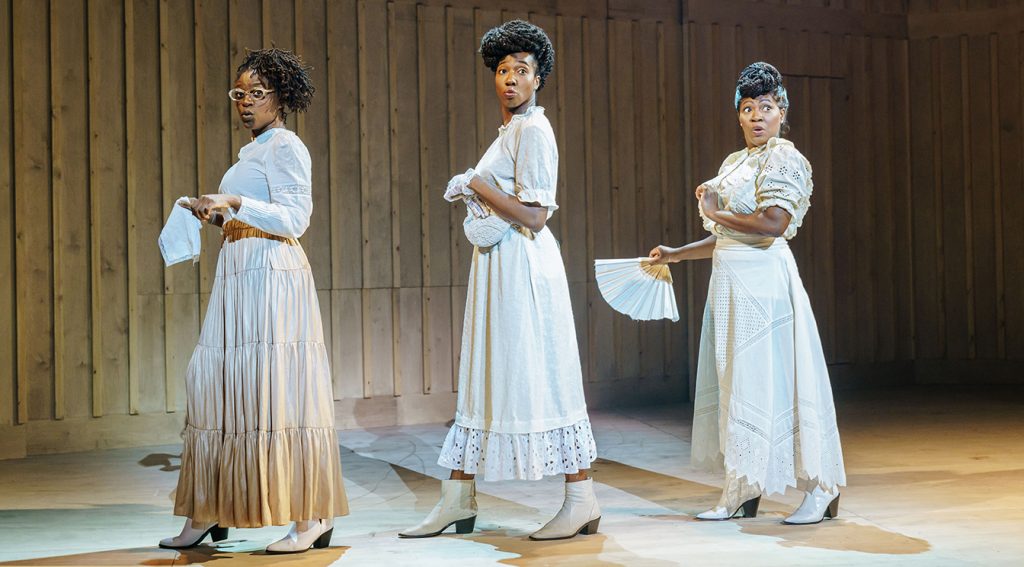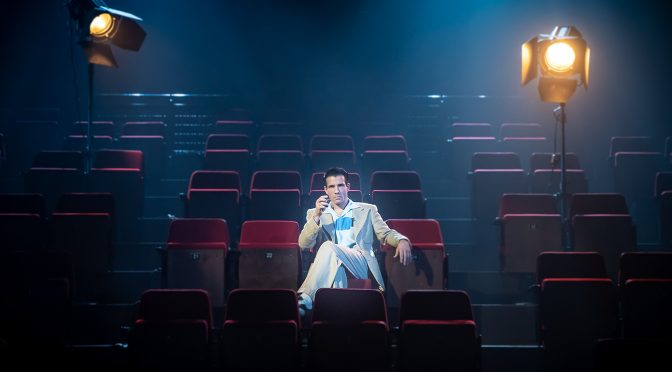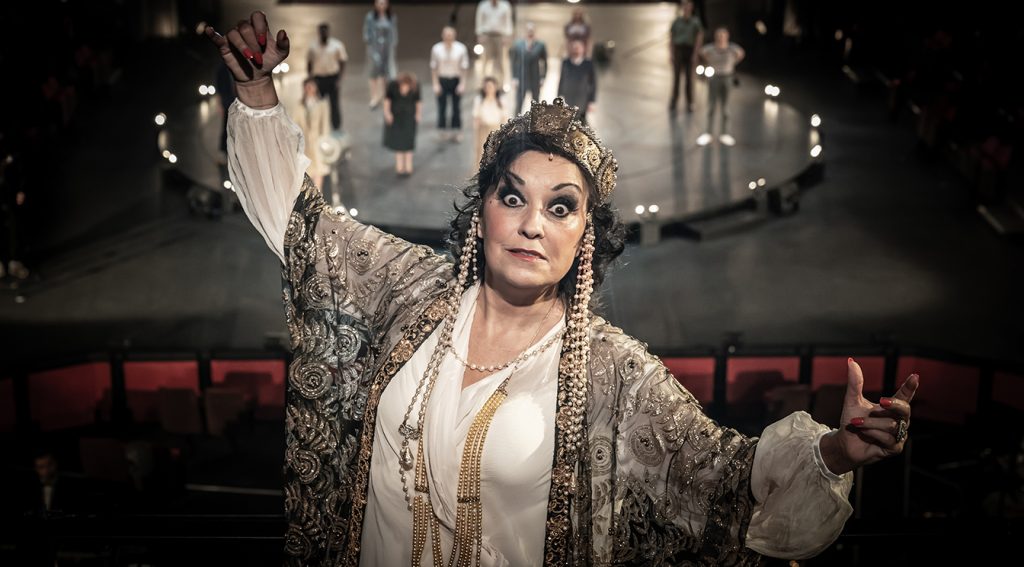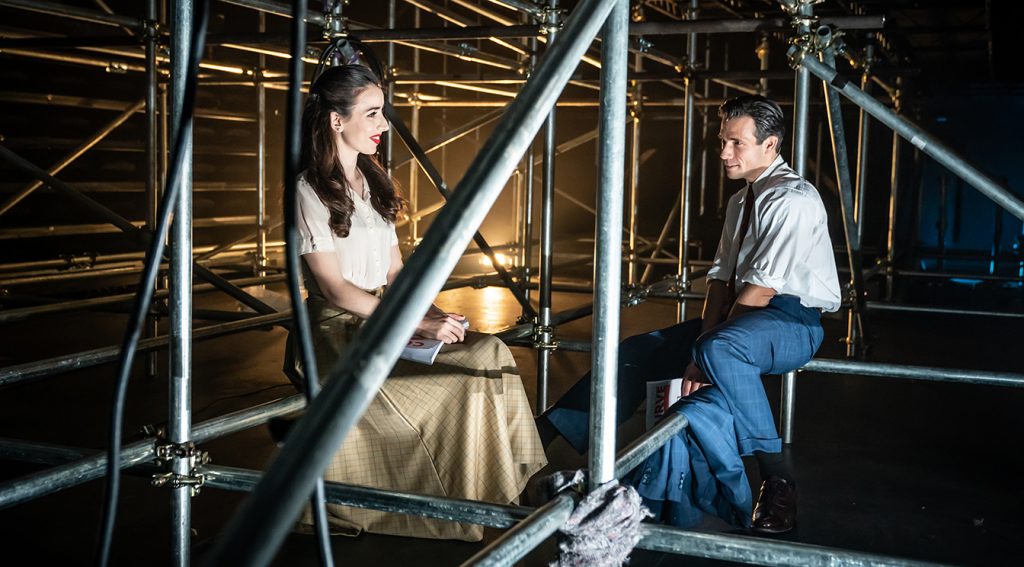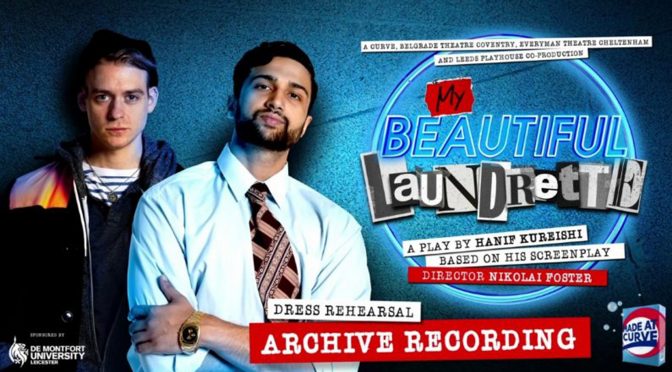Here is a revival that is happy with its source material. First seen in 1980, based on the 1933 film, and using the hits of Harry Warren (with lyrics from Al Dubin and Johnny Mercer), 42nd Street has always been an exercise in nostalgia. That doesn’t make it better or worse than current productions such as Guys & Dolls or Oklahoma! ,which feature memorable innovations. The show is a comfortable one and hugely entertaining. You know what to expect and director Jonathan Church delivers.
The simple plot and corny jokes in Michael Stewart and Mark Bramble’s book are embraced. If it feels like you already know the story of ingénue Peggy Sawyer, catapulted to fame from her place in the chorus line, it’s still a giggle to watch. The performance here, from the hugely talented Nicole-Lily Baisden is superb. From audition, rehearsals and then taking the lead in the show within a show – Peggy’s is a triumph the whole audience gets behind.
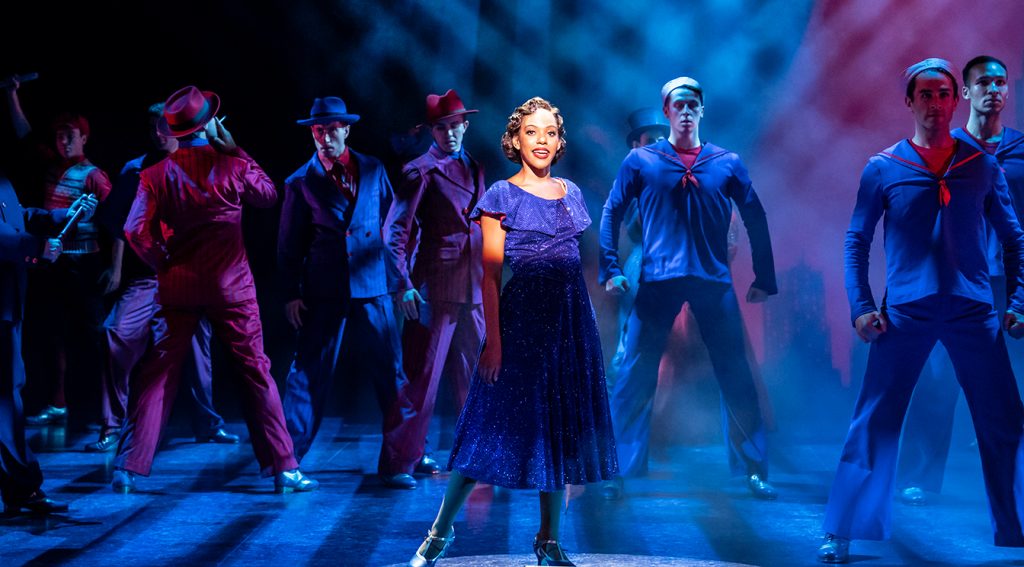
The backstage shenanigans, the imperious star Dorothy Brock (Ruthie Henshall) and tyrannical director Julian Marsh (Adam Garcia), are all three guilty pleasures. And there’s a lovely romance for Peggy – why wouldn’t there be? – with tenor Billy Lawlor (Sam Lips). The performances have a justified confidence. And, a personal favourite, there’s Josephina Gabrielle (as writer/producer Maggie Jones), who always manages to make a comic song that little bit funnier.
The songs are fantastic. It’s amazing how so many, written so long ago, are still recognised. The singing is, appropriately, old fashioned (the men often come close to crooning). Any opportunity to belt out a zinger is taken – as it should be. And the orchestra does it all proud. The show sounds great – fulsome and full of wit. There’s a lighthearted humour in the sound of the songs themselves that matches the silly goings-on.
Innovation does come, with the choreography from Bill Deamer and Rob Jones, which makes the show, originally from The Curve in Leicester, at home in Sadler’s Wells. The tap dancing is top notch. And alongside plenty of easy assurance, there are rigid movements that evoke exercise or even military precision. It’s a neat way to bring out the show’s preoccupation with effort behind the scenes. And a nice nudge that relaxed smiles belie huge effort – a good old-fashioned showbiz touch – to remind you that you really should applaud loudly.
Until 2July 2023
Photo by Johan Persson

